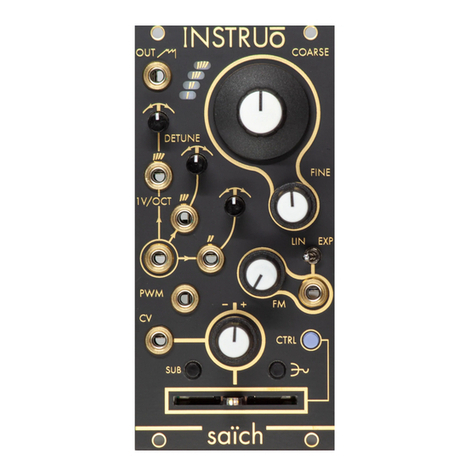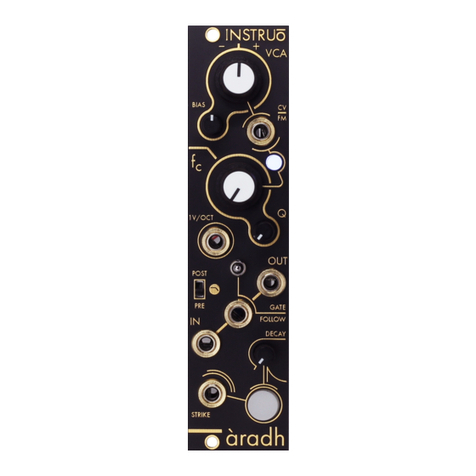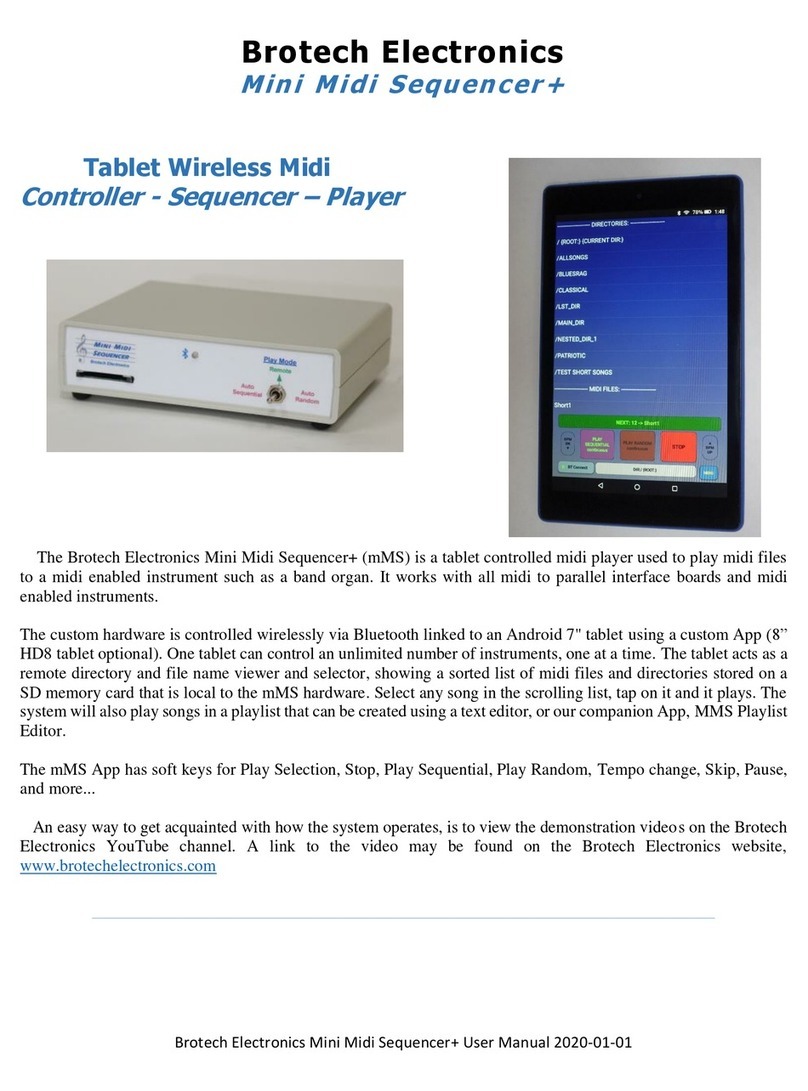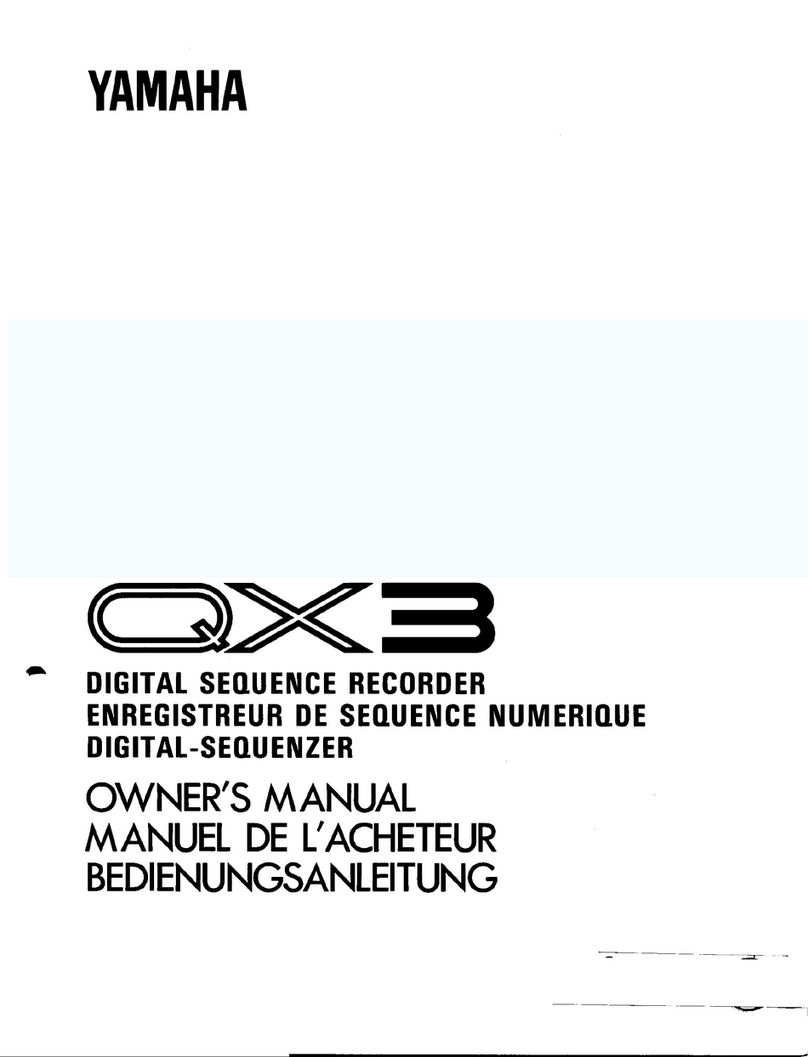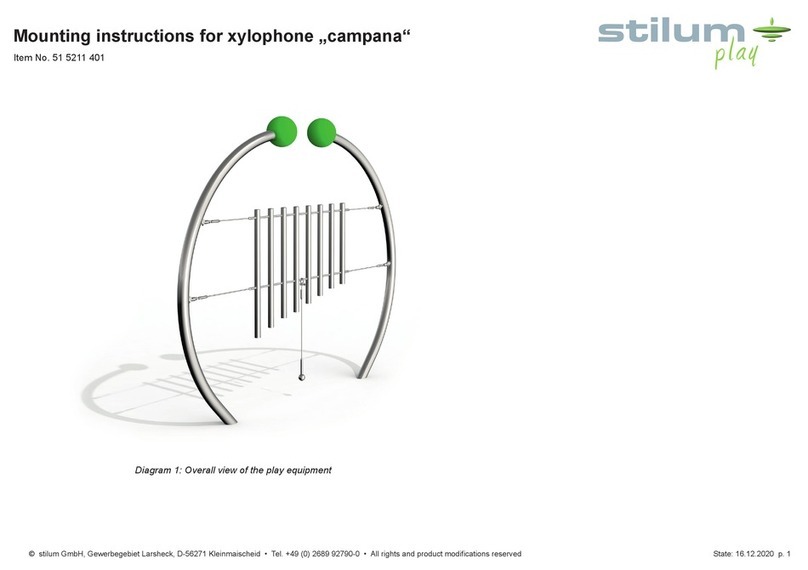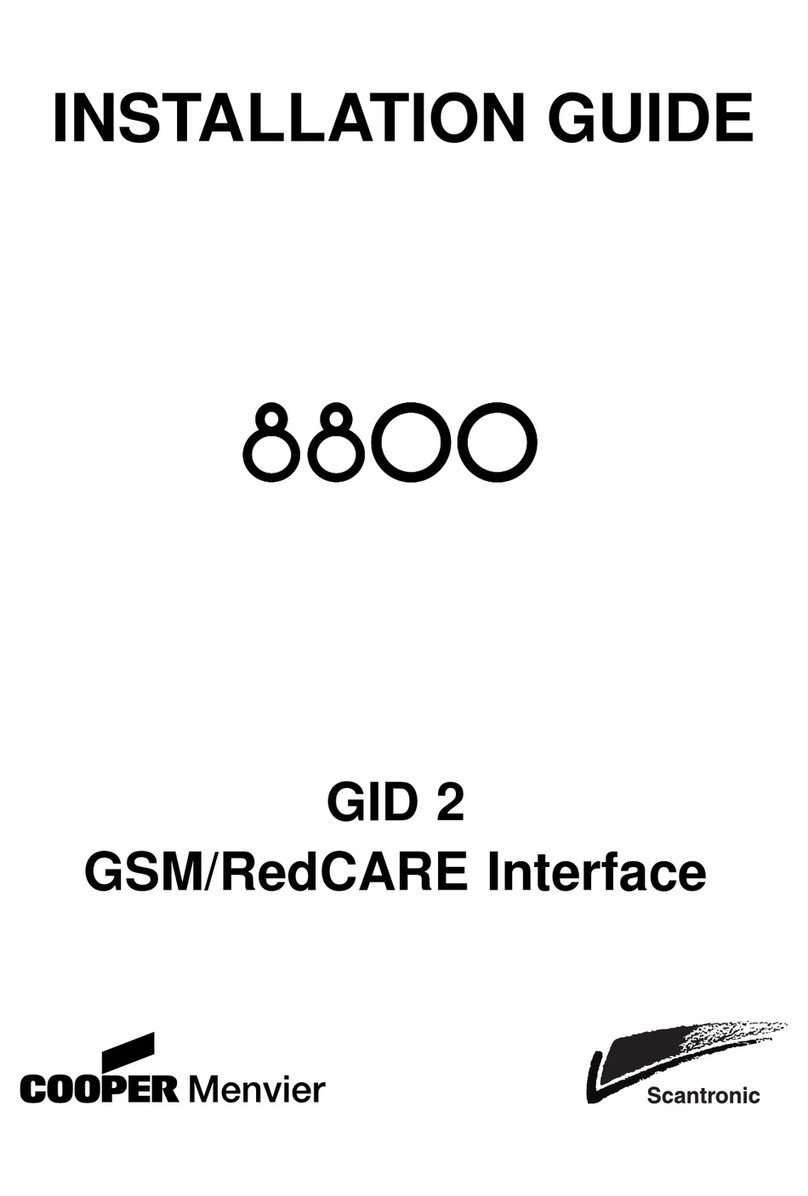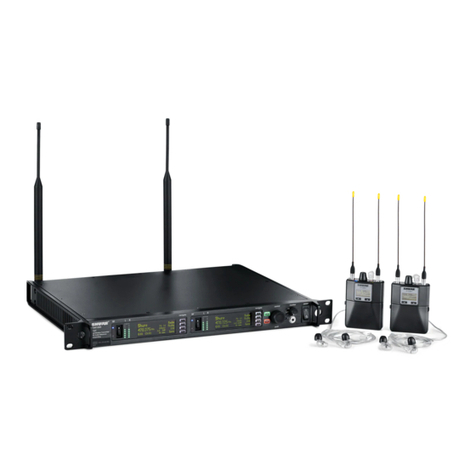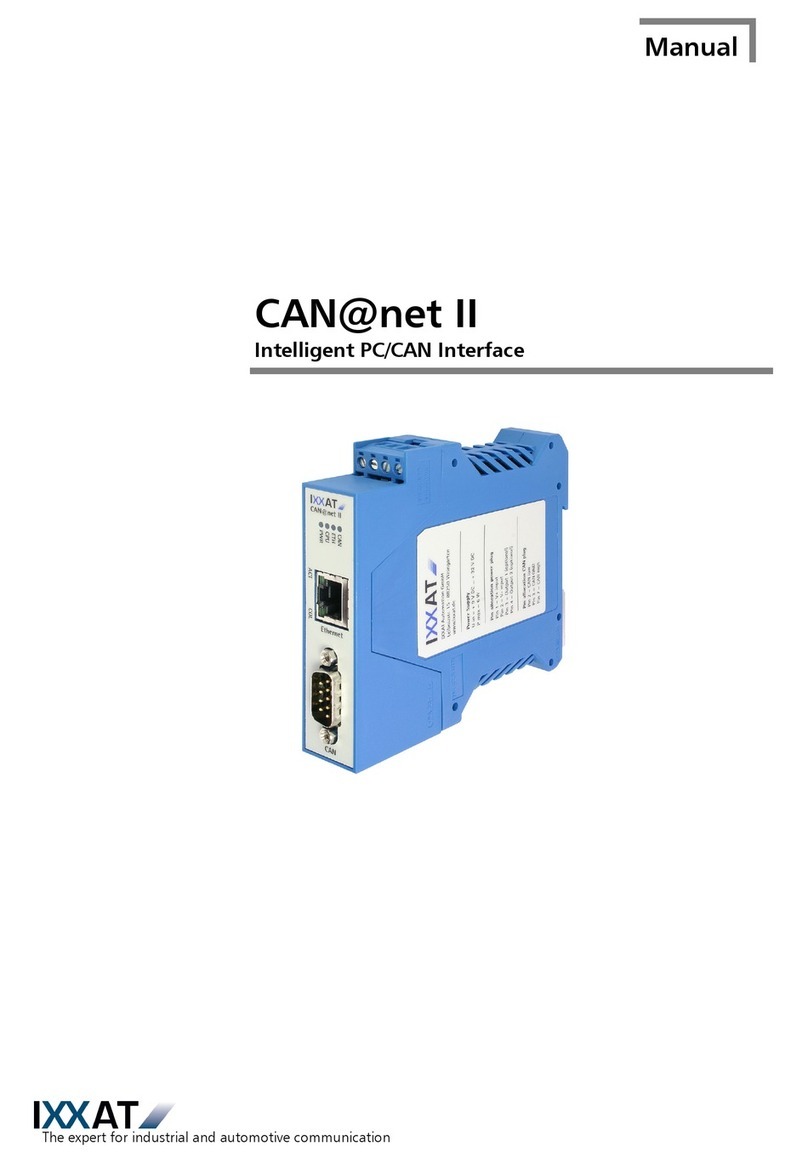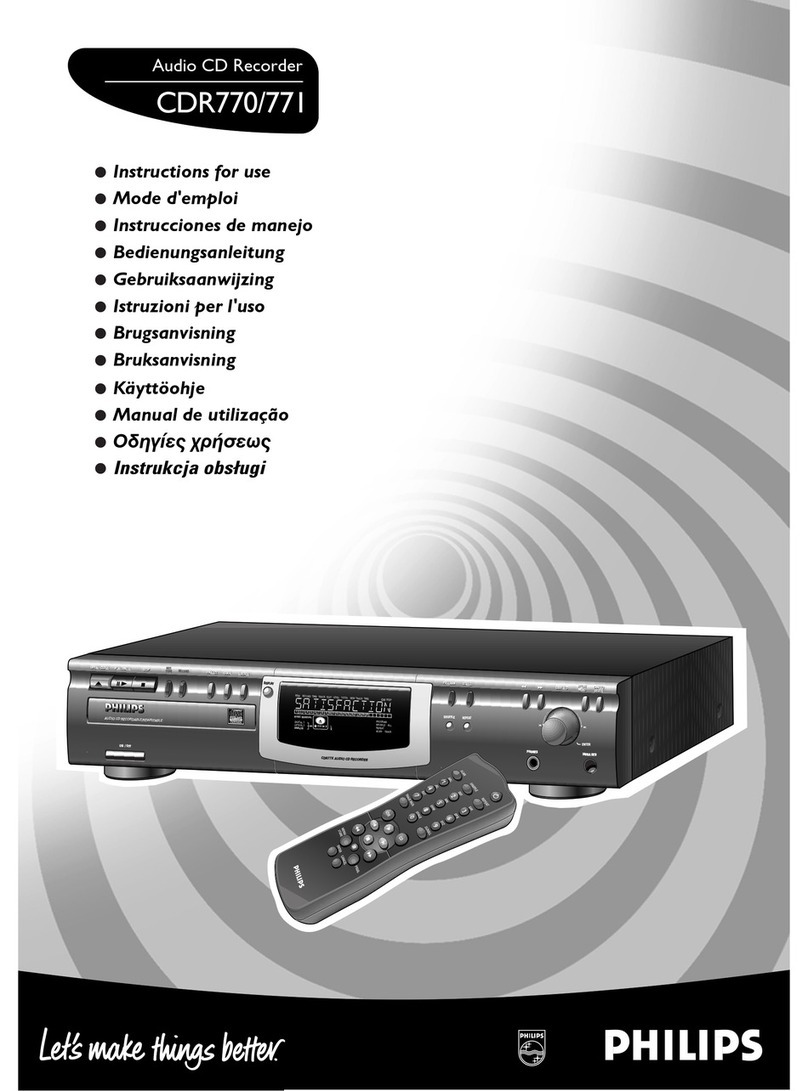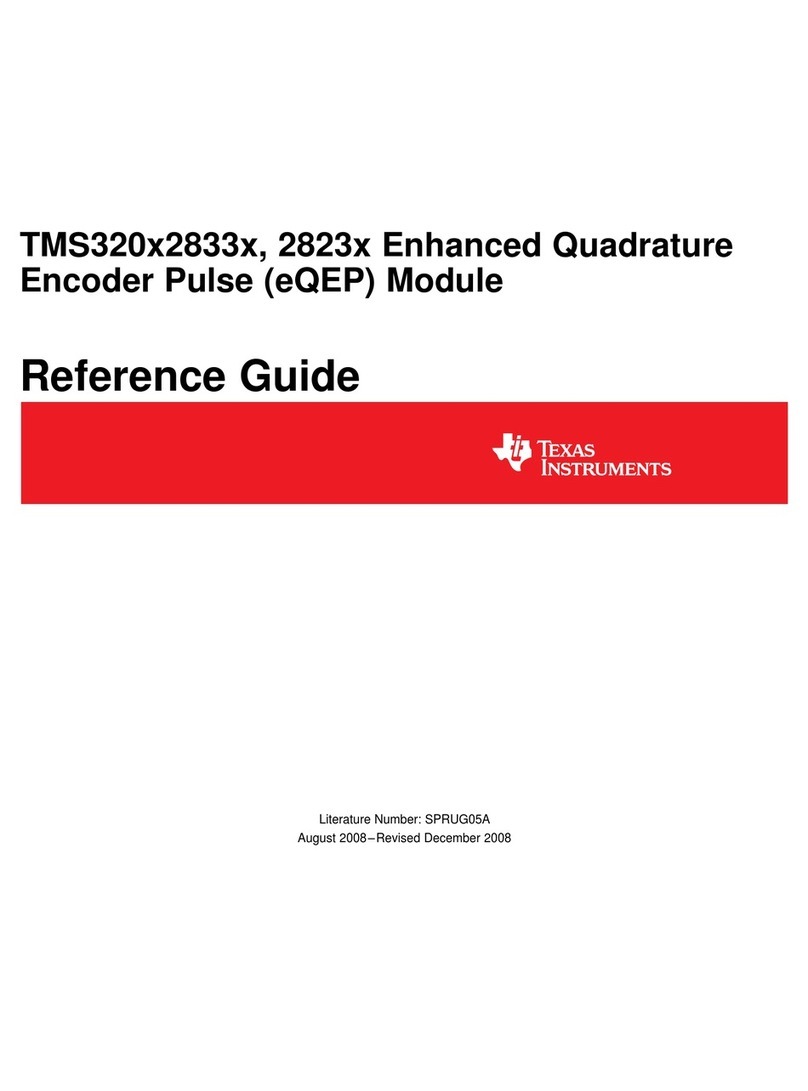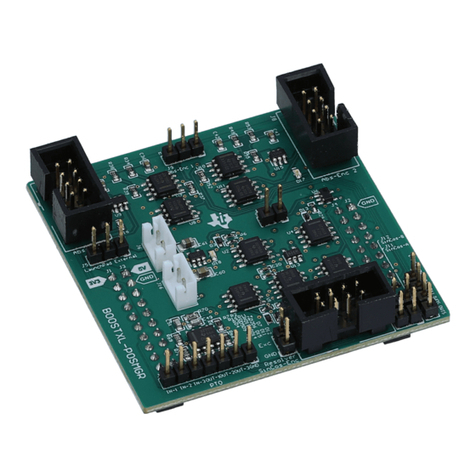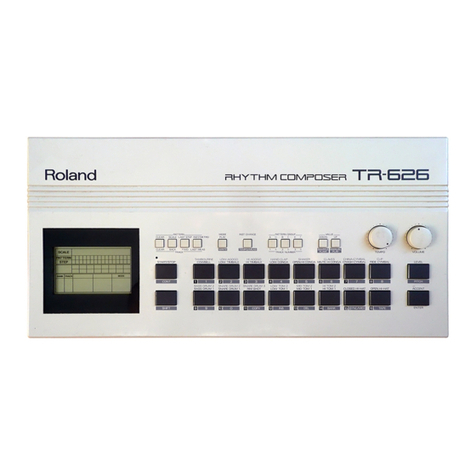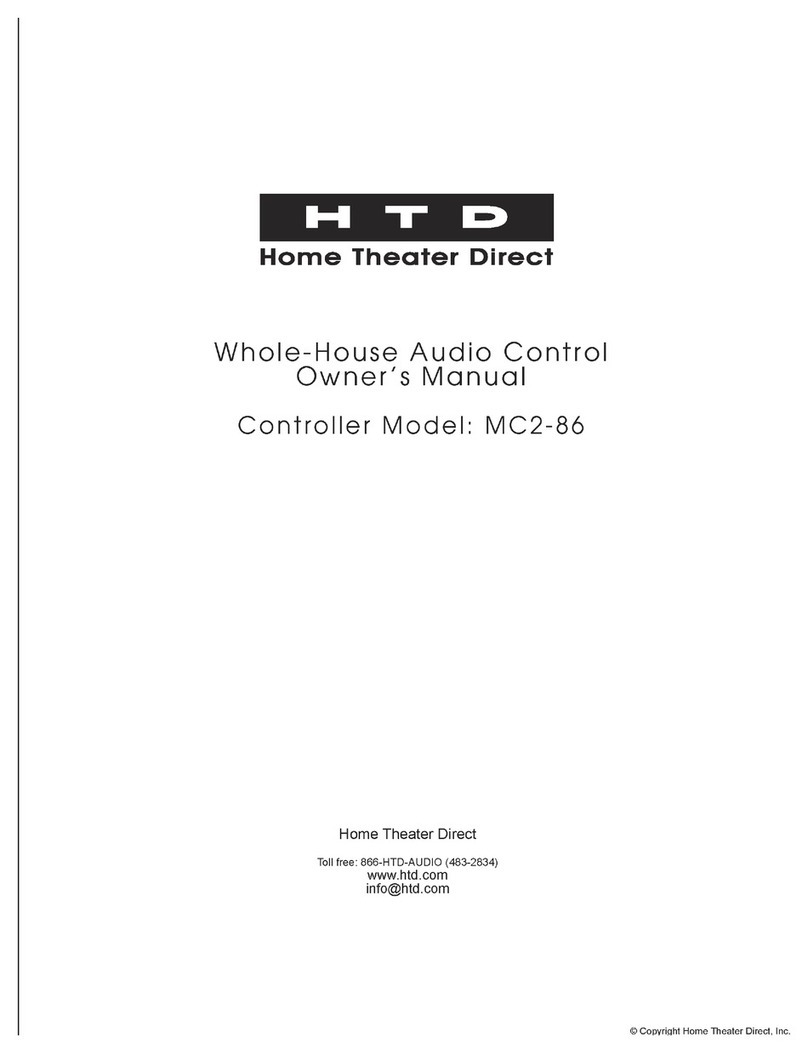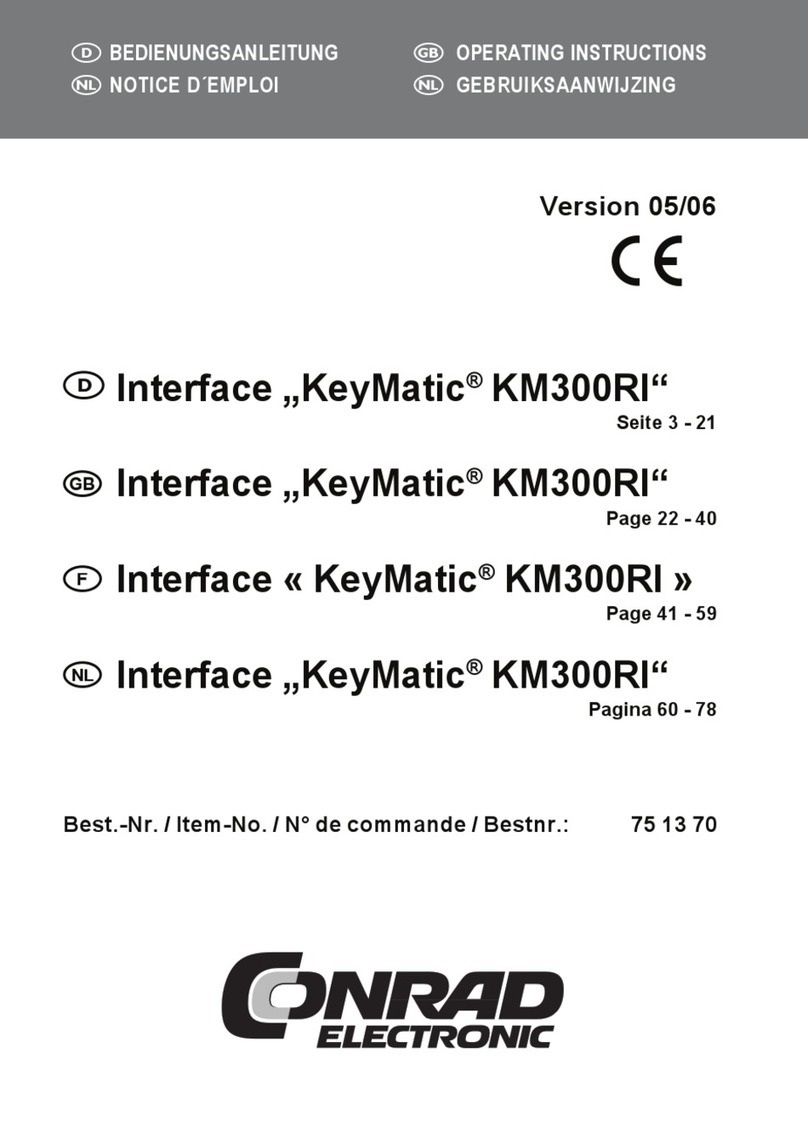Instruo traigh User manual

tràigh
Discrete Transister Ladder
Lowpass Filter
User Manual

3
Description
Nothing quite beats the comforting sound of multiple rich sawtooths
softened by a warm, squishy filter. tràigh is a classic transistor ladder
low pass filter with a -24dB/octave slope (4 pole). Derived from classic
East Coast designs, tràigh is suited for creating fat, warm subtractive
voices. With its built in three channel mixer, its optimised design allows
for summing multiple audio signals and softening them into a warm,
comforting cushion of sound.
Features
• Self-Oscillating resonance
• 1V/Oct tracking
• Three channel mixer with gain
• Linear FM

4
Installation
1. Confirm that the Eurorack synthesizer system is powered off.
2. Locate 18 HP of space in your Eurorack synthesizer case.
3. Connect the 10 pin side of the IDC power cable to the 2x5 pin
header on the back of the module, confirming that the red stripe on
the power cable is connected to -12V.
4. Connect the 16 pin side of the IDC power cable to the 2x8 pin
header on your Eurorack power supply, confirming that the red
stripe on the power cable is connected to -12V.
5. Mount the Instruō tràigh in your Eurorack synthesizer case.
6. Power your Eurorack synthesizer system on.
Note:
This module has reverse polarity protection.
Inverted installation of the power cable will not damage the module.
Specifications
• Width: 18 HP
• Depth: 27mm
• +12V: 40mA
• -12V: 20mA

5
tràigh | tra:j | noun (coastal tide) the rising and falling of the sea
due to the attraction of the moon, to ebb, recede, settle, empty
Key
1. Inputs
2. Mixer
3. Output
4. Level Fader
5. Coarse
6. Fine
7. Resonance
8. 1V/Oct Input
9. Linear FM Input
10. Linear FM Attenuator
5
6
111 7
8
9
10
3
2
4

6
Inputs/Outputs
Inputs: There are three audio Input channels that mix the incoming
signals before reaching the low pass filter circuit.
Mixer: Each Input has a dedicated Level fader.
• Input signals will reach approximately unity gain when the
corresponding Level fader is set at its centre point.
• Increasing the Level fader will add gain and introduce soft clipping
overdrive to the incoming signal.
Output: The Output signal is the low pass filtered result of the mixed
audio signals present at the Inputs.
Level: The Level fader is a global attenuator of the final mixed
Output amplitude.
• If the fader is in the down position, the Output will be silent.
• If the fader is in the up position, the Output will be at its full
scale amplitude.

7
Filter
Coarse: The Coarse knob controls the cutoff frequency of the
low pass filter.
• The cutoff frequency is the point at which the filtered signal is
reduced by 3dB in amplitude.
• Turning the knob anticlockwise will decrease the cutoff frequency.
• Turning the knob clockwise will increase the cutoff frequency.
• If tràigh is used as an oscillator, the knob controls the fundamental
frequency of the oscillator.
• Range: ~250Hz - 13KHz.
Fine: The Fine knob is used for minute control of the cutoff frequency
and is relative to the cutoff frequency value set by the Coarse knob.
• Turning the knob anticlockwise will decrease the cutoff frequency.
• Turning the knob clockwise will increase the cutoff frequency.
• If tràigh is used as an oscillator, the knob controls the fundamental
frequency of the oscillator.
Resonance: The Resonance knob determines the level of inverted
feedback from the filter’s output to its input.
• This is also known as the Q, Emphasis, or Feedback.
• With Resonance introduced, the cutoff frequency will be
accentuated while the passband will inversely scale
in amplitude.
• Turning the knob anticlockwise will decrease the resonance.
• Turning the knob clockwise will increase the resonance.
• If the Resonance knob is at its maximum value and there is no input
signal, tràigh will self-oscillate as a stable sine waveform.

8
Frequency Modulation
1V/Oct Input: The 1V/Oct Input is a bipolar control voltage input for
the cutoff frequency.
• This can also be thought of as an Exponential CV Input.
• If tràigh is self-oscillating, the 1V/Oct Input can be used for
consistent pitch tracking of the sine waveform, effectively making
tràigh a fully functional sine waveform oscillator.
• Control voltage is added to the summed values set by the Coarse
and Fine knobs.
Linear FM Input: The Linear FM Input is a bipolar control voltage input
for the cutoff frequency.
• Control voltage is summed with the values set by the Coarse and
Fine knobs.
• If tràigh is self-oscillating, the Linear FM Input can be used to add
non-harmonic sidebands to the sine waveform.
Linear FM Attenuator: The Linear FM Attenuator determines the depth
of frequency modulation applied to the cutoff frequency.
• Turning the Linear FM Attenuator clockwise will increase the depth
of linear frequency modulation.
• Turning the Linear FM Attenuator anticlockwise will decrease the
depth of linear frequency modulation.

9
Patch Examples
East Coast Synth Voice
Summary: The sequencer or keyboard sends voltages to the oscillator
while simultaneously triggering the envelope generator. The CV output
of the envelope generator opens tràigh and the VCA, allowing the
mixed oscillator signals to pass through. More traditional East Coast
patches would incorporate separate envelope generators for tràigh and
the VCA.
Audio Path:
• Connect the desired waveforms of three oscillator to the three Inputs
of tràigh.
• Connect the Output of tràigh to the audio input of a VCA.
• Monitor the audio output of the VCA.
• Set two of the oscillators to unison (some detuning is aloud).
• Set the third oscillator to one octave below the other two oscillators.
• Set the Mixer faders to a desired position.
• Set the Level fader to its maximum setting.
• Set the Coarse knob to a desired position.
• Set the Resonance knob to a desired position.
• Set the level of the VCA to a desired position.
1V/Oct Signal
Gate Signal
Output

10
Control Path:
• Connect the 1V/Oct output of a sequencer or keyboard to a
buffered multiple.
• A buffered multiple will keep the signal from dropping voltage
when split.
• Connect four copies of the 1V/Oct CV signal to the 1V/Oct inputs
of all three oscillators and the 1V/Oct Input of tràigh. This is known
as Keyboard Tracking and allows tràigh to track the sequencer
or keyboard voltage. As higher voltages are generated, the cutoff
frequency increases.
• Connect the gate output of the sequencer or keyboard to the trigger
input of an envelope generator.
• Connect the CV output of the envelope generator to a multiple.
• Connect one copy of the envelope generator CV signal to the Linear
FM Input of tràigh and set the Linear FM Attenuator to a
desired position.
• Connect a second copy of the envelope generator CV signal to the
CV input of the VCA and set the corresponding CV attenuator to a
desired position.
• Set the envelope stages to desired positions.

11
Sine Waveform Generator
Summary: Peaking the resonance of a tràigh forces it to self-oscillate at
a pure sine waveform. Once the waveform is generated, it can then be
patched through a VCA as a simple synth voice patch. This was often
the technique to create sine waveforms in the early days of electronic
synthesiser music. In the simplest of contexts, a second filter in the audio
path is not needed, because a sine waveform only loses amplitude
when patched through a filter. This is because there are no other
harmonics to attenuate, only the fundamental.
Audio Path:
• Connect the Output of tràigh to the audio input of a VCA.
• Set the Resonance knob fully clockwise.
• Without an input signal, tràigh resonantes as a pure sine waveform.
• Set the Coarse knob to the desired fundamental frequency.
1V
/
Oct Signal
Gate Signa
l
Output

12
• Set the Level fader to its maximum setting.
• Set the level of the VCA to a desired position.
• In this patch the Coarse and Fine knobs are frequency
(pitch) controls.
Control Path:
• Connect the 1V/Oct output of a sequencer or keyboard to the
1V/Oct Input of tràigh.
• Connect the gate output of the sequencer or keyboard to the trigger
input of an envelope generator.
• Connect the envelope generator CV output to the CV input of VCA
and set the corresponding CV attenuator to a desired position.
• Set the envelope stages to desired positions.

13
Audio Rate Filter
Summary: The three oscillators present at the three Inputs of tràigh are
mixed while being modulated by the audio rate signal at the 1V/Oct
Input and the Linear FM Input. Self-oscillating Resonance of tràigh
adds further audio rate modulation.
Audio Path:
• Create an East Coast Synth Voice audio path.
• Connect the desired waveforms of three oscillator to the three Inputs
of tràigh.
• Connect the Output of tràigh to the audio input of a VCA.
• Monitor the audio output of the VCA.
• Set the Mixer faders to a desired position.
• Set the Level fader to its maximum setting.
• Set the Coarse knob to a desired position.
• Set the Resonance knob to a desired position.
• Set the level of the VCA to a desired position.
Audio Rate Signal
Audio Rate Signal
1V/Oct Signal
Output

14
Control Path:
• Connect an audio rate signal of a separate oscillator to the 1V/Oct
Input of tràigh.
• Connect another audio rate signal from a second separate oscillator
to the Linear FM Input of tràigh.
• Turn the Linear FM Attenuator fully clockwise.
This device meets the requirements of the following standards: EN55032,
EN55103-2, EN61000-3-2, EN61000-3-3, EN62311.
Manual Author: Collin Russell
Manual Design: Dominic D’Sylva
Table of contents
Other Instruo Recording Equipment manuals

